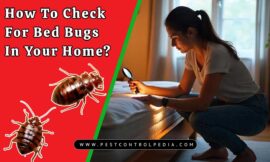In recent years, bed bug infestations have become increasingly common in homes, hotels, and other residential and commercial settings. This resurgence can be attributed to several factors, including increased international travel, resistance to commonly used insecticides, and lack of public awareness about effective prevention and control measures.
Bed bugs are small, elusive insects that feed on human blood, often going unnoticed until an infestation has already taken hold. These pests can be challenging to eliminate due to their ability to hide in cracks and crevices, their resilience to certain insecticides, and their rapid reproduction rate.
Addressing bed bug issues promptly is crucial to prevent the infestation from spreading and becoming more difficult to control. Ignoring the problem can lead to increased costs, emotional distress, and potential health risks associated with bed bug bites.
But don't worry, we've got you covered! Our in-depth guide will unveil the mystery behind bed bugs and provide you with practical solutions to effectively eliminate them from your home.
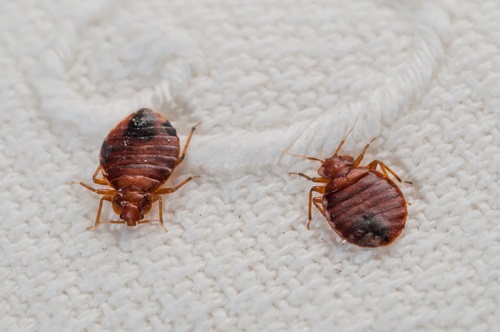
Identifying Bed Bugs: Recognizing the Signs
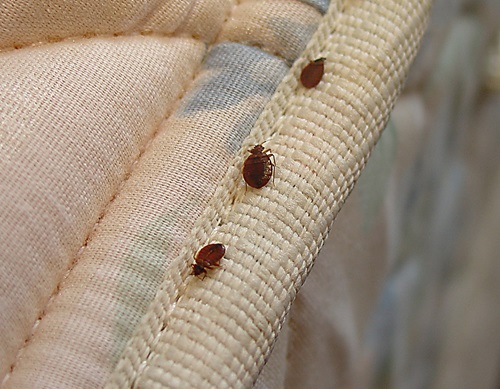
The first step in tackling a bed bug problem is to identify them correctly. Bed bugs are small, brownish-red insects that feed on human blood. They're about the size of an apple seed and can be tricky to spot, especially in the early stages of an infestation. Look for the early signs of a bed bug infestation:
Bite Marks on the Skin
One of the most obvious signs of bed bugs is the appearance of small, red bite marks on your skin. These bites are often clustered together and can be itchy and irritating. Bed bugs typically feed on exposed skin, so you may notice these bites on your arms, legs, or other uncovered areas.
Blood Stains on Sheets or Mattress
As bed bugs feed, they can leave behind small blood stains on your sheets or mattress. These stains may be the result of the bugs being crushed or the blood from their feeding.
Tiny Pale Yellow Eggs or Eggshells
Bed bugs lay tiny, pale yellow eggs that are about the size of a pinhead. You may also find the empty eggshells left behind after the eggs have hatched.
Bed Bug Fecal Matter (Black Dots)
Bed bugs leave behind small, black dots of fecal matter, which can be a telltale sign of their presence. These dots may be found on your mattress, sheets, or other surfaces where the bugs have been.
Shed Skin of Bed Bugs
As bed bugs grow, they shed their skin, leaving behind the empty exoskeletons. These shed skins can be another indicator of a bed bug infestation.
Musty Odor Around the Bed
Bed bugs can also produce a musty, sweet odor that may be noticeable in the area around your bed. This scent is caused by the pheromones the bugs release.
Actual Bed Bugs Visible in the Sleeping Area
Of course, the most obvious sign of a bed bug infestation is the presence of the actual bugs themselves. You may spot them crawling on your mattress, in the crevices of your bed, or even on the walls or furniture near your sleeping area.
Protecting Yourself: Preventing the Spread

Bed bugs can be a frustrating and challenging pest to deal with, but it's important to stay calm and take the necessary steps to prevent their spread. Here are some key tips to help you avoid spreading bed bugs to other areas:
Isolate Clothing and Belongings
- Wash and dry all clothing, bedding, and other washable items on the highest heat setting. This will kill any bed bugs or eggs present.
- Store clean items in sealed plastic bags or containers until the infestation is under control.
- Vacuum and clean the area thoroughly, paying special attention to cracks and crevices where bed bugs may hide.
Avoid Putting Personal Items on the Bed
Bed bugs are often introduced into homes through personal belongings, such as clothing, luggage, and furniture. To prevent this, avoid placing these items directly on the bed or other furniture. Instead, keep them off the bed and store them in sealed containers or bags when not in use.
Create a "Bed Island"
One effective way to prevent bed bugs from accessing your bed is to create a "bed island." This involves:
- Placing the bed legs in cups or bowls filled with a sticky substance like petroleum jelly or double-sided tape.
- Ensuring that the bed is not touching any walls or furniture, as bed bugs can use these as bridges to reach the bed.
- Regularly inspecting the bed island for any signs of bed bugs or their activity.
Stay Calm and Seek Professional Help
Dealing with a bed bug infestation can be stressful, but it's important to stay calm and avoid panicking. Bed bugs are not known to spread diseases and are not a sign of poor hygiene. If you suspect you have a bed bug problem, contact a professional pest control company for assistance. They can assess the situation, provide guidance on treatment options, and help you develop a plan to eliminate the infestation effectively.
Remember, with the right approach and professional help, you can successfully get rid of bed bugs and prevent their spread to other areas. Stay vigilant, follow these tips, and don't hesitate to seek assistance if needed.
Eliminating the Infestation: A Multi-Pronged Approach
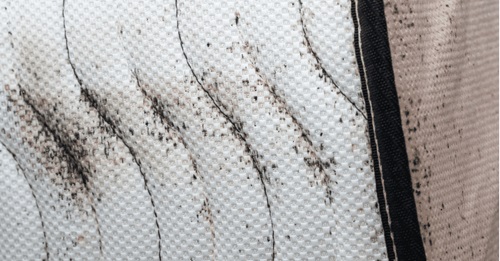
Thorough Cleaning and Vacuuming
Bed bugs can hide in the most unexpected places, so it's crucial to thoroughly clean and vacuum your living space. This includes carefully inspecting and cleaning mattresses, box springs, bed frames, and any crevices or cracks where bed bugs may be lurking. Vacuuming can help remove adult bed bugs, nymphs, and eggs, but be sure to dispose of the vacuum bag or contents properly to prevent the bugs from escaping.
High Heat or Extreme Cold Treatment
Bed bugs and their eggs are vulnerable to extreme temperatures. Exposing infested areas to high heat (at least 120°F/49°C) or extreme cold (below 0°F/-18°C) can effectively kill these pests. This can be done through professional heat treatment or by using specialized equipment like steam cleaners or freezers. Just be cautious and follow safety guidelines when using these methods.
EPA-Registered Insecticides (if Necessary)
In some cases, the use of EPA-registered insecticides may be necessary to eliminate a persistent bed bug infestation. These products are designed to target and kill bed bugs, including their eggs. However, it's important to follow the instructions carefully and consider the potential risks and environmental impact before using any chemical treatments.
Organic Treatment Options (e.g., Essential Oils)
If you prefer a more natural approach, there are organic treatment options available, such as the use of essential oils like tea tree oil, lavender oil, or peppermint oil. These natural compounds can be effective in repelling and even killing bed bugs. Essential oils can be applied directly to infested areas or used in diffusers to create a less toxic environment for the pests.
Persistence and Patience
Bed bug elimination can be a challenging and time-consuming process. It's important to be persistent and patient, as it may take multiple treatments and a combination of methods to fully eradicate the infestation. Regularly inspecting your living space, maintaining a clean environment, and being vigilant for any signs of bed bugs can help ensure a successful and lasting solution.
Remember, addressing a bed bug problem requires a multi-pronged approach that combines thorough cleaning, temperature treatments, and, if necessary, the judicious use of insecticides or organic alternatives. By being proactive and persistent, you can effectively eliminate these pesky pests and reclaim your living space.
Preventing Future Infestations: Staying Vigilant
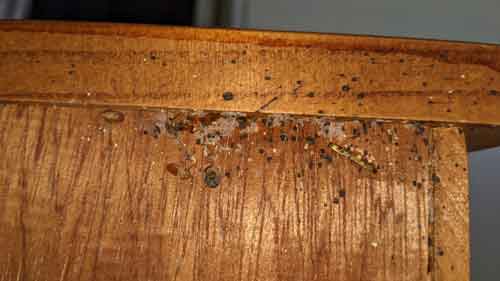
Use of Protective Mattress and Box Spring Covers
Investing in protective covers for your mattress and box spring is a great way to create a barrier against bed bugs. These covers are designed to seal in any existing bed bugs or eggs, preventing them from escaping and re-infesting your sleeping area. Look for covers that are labeled as "bed bug proof" and ensure a tight fit for maximum effectiveness.
Minimizing Clutter in the Bedroom
Bed bugs thrive in cluttered environments where they can easily hide and breed. Reduce the amount of clutter in your bedroom by regularly decluttering and organizing your space. Remove any unnecessary items, store belongings in sealed containers, and keep the area around your bed clear of excess furniture, clothing, and other potential hiding spots for bed bugs.
Careful Inspection of Secondhand Furniture and Luggage
When acquiring secondhand furniture or unpacking luggage from travels, it's crucial to inspect them thoroughly for signs of bed bug infestation. Look for small dark spots (bed bug droppings), shed skins, or the bugs themselves. If you suspect an item may be infested, avoid bringing it into your home and consider treating it with heat or insecticide before use.
Maintaining Good Hygiene and Regular Cleaning Habits
- Regularly wash and dry your bedding, including sheets, pillowcases, and blankets, using the hottest temperature setting. This will kill any bed bugs or eggs present.
- Vacuum your mattress, box spring, and surrounding areas regularly to remove any hidden bed bugs or eggs.
- Maintain good hygiene by regularly showering and washing your clothes to prevent bringing bed bugs into your home.
By following these tips and staying vigilant, you can significantly reduce the risk of bed bug re-infestations and maintain a comfortable, pest-free sleeping environment.
Conclusion
Dealing with bed bugs can be a frustrating and overwhelming experience, but with the right knowledge and a proactive approach, you can effectively eliminate them from your home.
Remember to stay vigilant, follow the steps outlined in this guide, and don't hesitate to seek professional help if needed. By taking the necessary actions, you can reclaim your space and enjoy a peaceful, bed bug-free environment.

